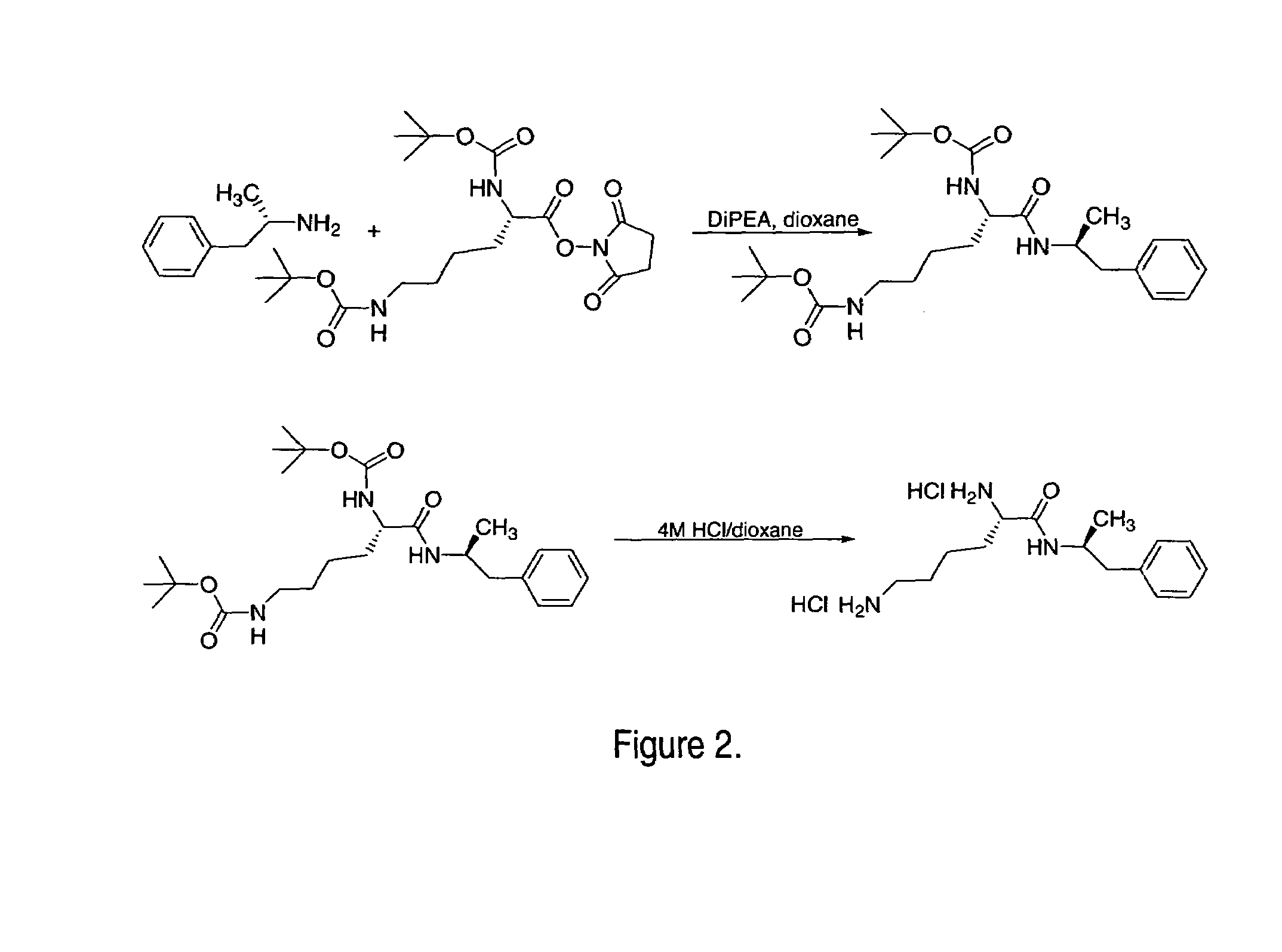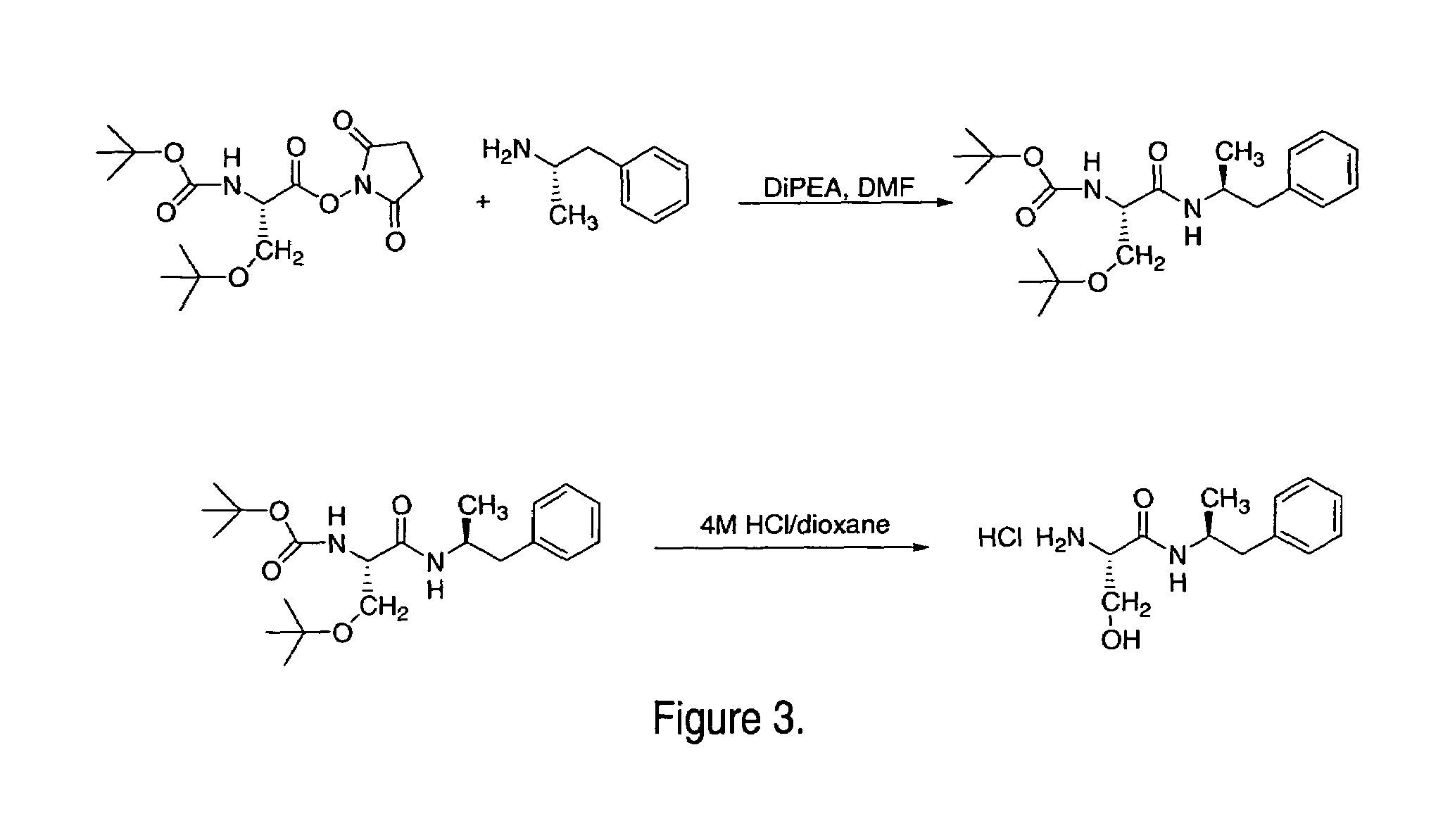Abuse-resistant amphetamine compounds
a technology of amphetamine and amphetamine, which is applied in the field of amphetamine compounds, can solve the problems of less controlled drug release, less abuse of amphetamines, and formulation breakdown, and achieve the effects of reducing the potential for overdose, preventing euphoria, and reducing the toxicity of amphetamines
- Summary
- Abstract
- Description
- Claims
- Application Information
AI Technical Summary
Benefits of technology
Problems solved by technology
Method used
Image
Examples
example 1
General Synthesis of Amino Acid-Amphetamine Conjugates
[0187]Amino acid conjugates were synthesized by the general method described in FIGS. 1–5.
example 2
Synthesis of L-lysine-d-amphetamine
[0188]L-lysine-d-amphetamine was synthesized (see FIG. 2) by the following method:
[0189]a. Coupling
[0190]
MolarReagentsMWWeightmmolesEquivalentsd-amphetamine freebase135.24.75g35.131Boc-Lys(Boc)-OSu443.515.58g35.131Di-iPr-Et-Amine129906mg7.030.2, d =0.74, 1.22 mL1,4-Dioxane—100mL——
[0191]To a solution of Boc-Lys(Boc)-OSu (15.58 g, 35.13 mmol) in dioxane (100 mL) under an inert atmosphere was added d-amphetamine freebase (4.75 g, 35.13 mmol) and DiPEA (0.9 g, 1.22 mL, 7.03 mmol). The resulting mixture was allowed to stir at room temperature overnight. Solvent and excess base were then removed using reduced pressure evaporation. The crude product was dissolved in ethyl acetate and loaded on to a flash column (7 cm wide, filled to 24 cm with silica) and eluted with ethyl acetate. The product was isolated; the solvent reduced by rotary evaporation and the purified protected amide was dried by high-vac to obtain a white solid. 1H NMR (DMSO-d6) δ 1.02–1.11...
example 3
Synthesis of Ser-Amp
[0195]Ser-Amp was synthesized by a similar method (see FIG. 3) except the amino acid starting material was Boc-Ser(O-tBu)-OSu and the deprotection was done using a solution of trifluoroacetic acid instead of HCl.
PUM
| Property | Measurement | Unit |
|---|---|---|
| time | aaaaa | aaaaa |
| time | aaaaa | aaaaa |
| concentration | aaaaa | aaaaa |
Abstract
Description
Claims
Application Information
 Login to View More
Login to View More - R&D
- Intellectual Property
- Life Sciences
- Materials
- Tech Scout
- Unparalleled Data Quality
- Higher Quality Content
- 60% Fewer Hallucinations
Browse by: Latest US Patents, China's latest patents, Technical Efficacy Thesaurus, Application Domain, Technology Topic, Popular Technical Reports.
© 2025 PatSnap. All rights reserved.Legal|Privacy policy|Modern Slavery Act Transparency Statement|Sitemap|About US| Contact US: help@patsnap.com



